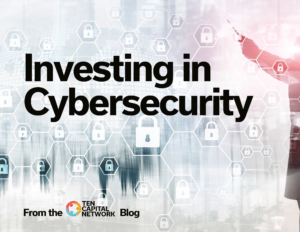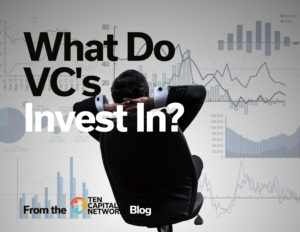
Investing in Cybersecurity
3 min read Investing in Cybersecurity Cybersecurity resulted from the expanded exposure of people’s critical information on the web, including personal data, identifiable information, healthcare information, and more. The industry is horizontal, crossing many other industries such as energy, consumer products, government services, media, and more. Cybersecurity is central to the functioning of these sectors, as well as our economy as a whole. There has been a significant increase in the “bad side” of cybersecurity. Whereas cyberattacks may have referred to petty theft, we now see massive attacks on both personal and national levels. Economically, there’s an entire industry on the wrong side which creates an explosive industry on the good side. The minute a cybersecurity capability that can block hackers’ tactics is found, the bad guys figure out a way around it, creating a continuous lifecycle for the cybersecurity industry. Why Cybersecurity? Unfortunately, there is a lot of cyber-crime happening. You can’t help but pick up the newspaper or turn on the TV and hear about another breach, another ransomware attack, or something else to be afraid of. And you only hear about the tip of the iceberg. There’s a lot of issues at work, and there are several different solutions. The growth in cybersecurity is an asset class, and from an investor’s perspective, everything is on the table. From traditional venture capital investments to early-stage seed investing, late-stage pre-IPO growth, and even buyouts, there is a full spectrum of investment opportunities in the cybersecurity space at this time. What Makes a Company Successful? What makes a successful cybersecurity company is the same as in any other sector- good timing, a strong team, the right technologies, and traction. Specific to cybersecurity is the understanding of the history and evolution of the industry. Cybersecurity is a relatively new field, and in the last 20 years, it’s grown to be more sophisticated than ever. Being in the know about mergers and acquisitions, technology adoption, company name-changes, and how this evolved is crucial to see opportunity in the space and avoid getting run over by the traditional tech companies. What Do Investors Want to See? Solid Management: Is the management team made up of solid leaders that understand the domain? Do they have the experience and skillsets to be understood in that particular domain? Market Share: Investors want a return on their investment. Is the market big enough not to be pushed out? Funding: What kind of money is backing the organization? In cybersecurity, it takes funding to get technologies to market. It’s not as extensive as pharmaceuticals or medical devices, which have many FDA regulations. Still, the technology itself takes some time to get done, meaning you need to have pockets with enough depth to bring you the runway you need. Culture: The culture of a company and the investor backing it has to be synergistic. When there are inevitable discussions, debates, and challenging situations, people aligned on the philosophies of life and management and structure and returns end up getting through together. In contrast, when it’s not aligned, you see scenarios that can destroy the organization, such as powerplays, struggles, and people not getting fair shakes. Distinctive Technologies: Technologies addressing significant and large problems are going to go further. Investors tend to be turned off by companies who claim to do or solve it all because it is improbable they do. Investors in this space look for companies that do one thing and do them well, especially when funding small or young companies. And for Extra Credit Quantification and Defensible Metrics: Very few companies are quantifying cyber risk or have a defensible set of algorithms that look at cybersecurity in the digital asset context. Today, 85% of businesses are run digitally. The explosion to digitization is parallel to the explosion in cybercrime, and this is what the cyber-criminal attacks. When you can quantify this, many use cases come out of it, including prioritization and insurance limits that aid in prioritizing your cyber program. Read more in the TEN Capital eGuide: http://staging.startupfundingespresso.com/investor-perspectives-on-the-cybersecurity/ Hall T. Martin is the founder and CEO of the TEN Capital Network. TEN Capital has been connecting startups with investors for over ten years. You can connect with Hall about fundraising, business growth, and emerging technologies via LinkedIn or email: hallmartin@tencapital.group








